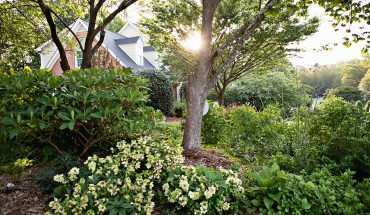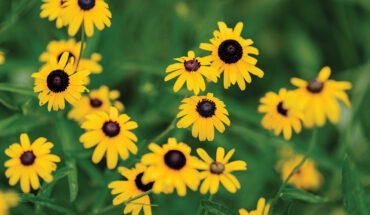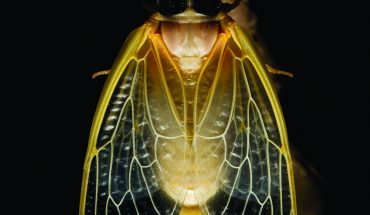by Tony Avent
illustration by Ippy Patterson
Though it grows wild from coastal North Carolina westward to Louisiana, gardeners in our area have traditionally found their Stokes’ Asters at the local nursery.
Back in the 1960s and 1970s, all Stokes’ Aster (Stokesia laevis) sold were grown from seed. This produced plants with lovely blue flowers, but it also produced lax stalks. Lax, of course, is a technical plant catalog term for limp as a spaghetti noodle.
Fast-forward to the 1980s, when folks learned to propagate Stokes’ Aster from root cuttings. Sturdy stems followed, and before you knew it, gardeners around the country were introducing cloned selections to preserve those sturdy stems and other traits lost when Stokes’ Aster is grown from seed.
There were lovely purple and yellow-flowered selections, but the crowning achievement came from Mississippi gardener and florist Peachie Saxon.
Peachie’s Pick was discovered as a seedling in Peachie’s garden, and soon became the industry standard against which all other Stokes’ Asters are judged. What makes Peachie’s Pick so great is the abundance of sturdy, two-foot tall upright stems, topped in late June and July with clusters of three-inch ragged-edge blue flowers – a favorite of gardeners and yellow swallowtail butterflies alike. Unlike the more common seed strains, which can become weedy by seeding around the garden, we haven’t seen a garden seedling from a Peachie’s Pick in over a decade.
In addition to its beauty, Peachie’s Pick can tolerate full to part sun and anything from fairly dry acidic soils to a pond’s edge.
Tony Avent is an international plant explorer who has traveled the world in search of unusual specimens. He is the owner of Raleigh’s Juniper Level Botanical Gardens and Plant Delights Nursery, which specializes in rare and unusual perennials, hostas, and plants native to the United States. Tony was the landscape director of the North Carolina State fairgrounds from 1978-1994.



